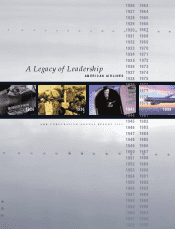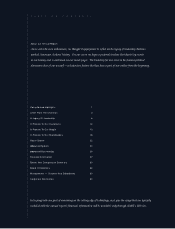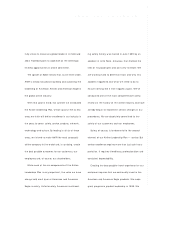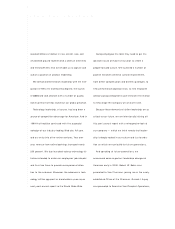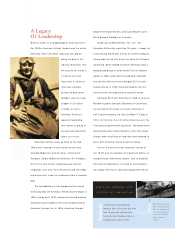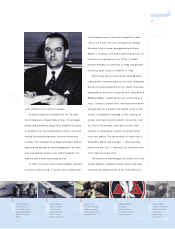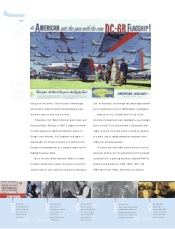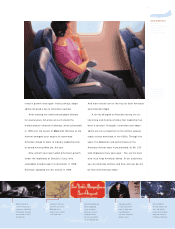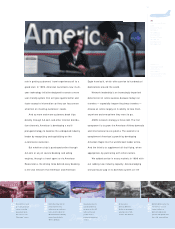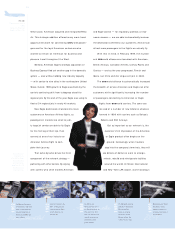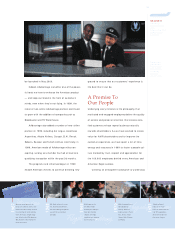American Airlines 1999 Annual Report Download - page 8
Download and view the complete annual report
Please find page 8 of the 1999 American Airlines annual report below. You can navigate through the pages in the report by either clicking on the pages listed below, or by using the keyword search tool below to find specific information within the annual report.
A Legacy
Of Leadership
Since its origin as a hodgepodge of small carriers in
the 1920s, American Airlines’ leaders and the entire
American team have been singularly focused on
being the best in the
industry. American, like
the country for which it
is named, has seen
more than its share of
trials and triumphs
during the past seven
decades. And as a new
chapter in its history
unfolds, we see in
American Airlines a
legacy of leadership
that makes us proud of
our past and optimistic
about our future.
American Airlines’ roots go back to the mid-
1920s with a group of enthusiastic carriers that
included Robertson Aircraft Corp., Colonial Air
Transport, Embry-Riddle and Southern Air Transport.
One of the very earliest employees was Charles
Lindbergh, who flew the mail and infused the fledg-
ling airline with a spirit of excellence from its earliest
days.
The consolidation of the companies that would
eventually bear the American Airlines banner began in
1929, and by early 1930, several carriers and holding
companies came together and were incorporated as
American Airways, Inc. In 1934, American Airways
became American Airlines, and Cyrus Rowlett (C.R.)
Smith became President of American.
Tough, but widely beloved, “ Mr. C.R.” led
American Airlines for more than 30 years — except for
a stint during World War II when he served as Deputy
Commander of the U.S. Army’s Air Force Air Transport
Command. Smith helped transform American from a
disorganized group of small carriers into an industry
leader. In 1936, under Smith’s leadership, American
was the first airline to fly the Douglas DC-3 in com-
mercial service. In 1959, American became the first
carrier to offer nonstop coast-to-coast jet service.
Although Smith left American in 1968 to serve as
President Lyndon Johnson’s Secretary of Commerce,
he returned to the airline as interim Chairman in
1973, before handing the reins to Albert V. Casey in
1974. At the time, the U.S. airline industry was in the
final years of government regulation. The government
determined where airlines could fly, what they could
charge, even what kind of food they were allowed to
serve. Still, American found ways to innovate.
One of the airline’s most important moves of
the 1970s was the decision to modernize Sabre, its
computerized reservations system, and re-establish
American’s leadership in the field of data process-
ing. Today, American’s technical capabilities remain
6
One of the
company's early
employees, Charles
A. Lindbergh, flew
the mail for one
of American's prede-
cessor companies in
the mid-1920s.
1926
TIMELINE
Charles A. Lindbergh, chief
pilot for Robertson Aircraft
Corp., flies a biplane carry-
ing mail from Chicago to
St. Louis for an American
Airlines predecessor
company.
It seems like just yesterday that
American flew its first plane. But more
than 70 years later, the airline has
had many more milestones. Here’s a
snapshot look at some of them.
THE PAST, PRESENT AND
FUTURE OF AMERICAN

